
Why could Kawasaki generate Z1/Z2, the unparalleled masterpiece motorcycles, nearly 50 years ago?
When bikers define the motorcycle, it is Kawasaki’s Z1 or Z2. Do you know the contexts in which such masterpieces were born? This story gives the histories of how Kawasaki gained the fame around the world by these two bikes in 1970’s and the fascinations of them.
Z1 birth year is 1972 and its target market was North America.
If bikers are asked what is ‘King of Motorcycle’ or ‘the bike of bikes’, Kawasaki’s 750RS aka. ‘Z2’ will come up into the majority’s minds, won’t it?
Many veteran bikers would say “I longed for it in my youth!” The ages of the bikers who rode on the new ones are already 65 to 70 or above. In the first place, Z2 was not a bike which bikers easily got.
Z2 was marketed in Japan as a low displacement version of ‘900 Super 4’ aka. ‘Z1’, which was put into the US market in 1972. In those days, the engine displacement was allowed up to 750cc in the domestic market.
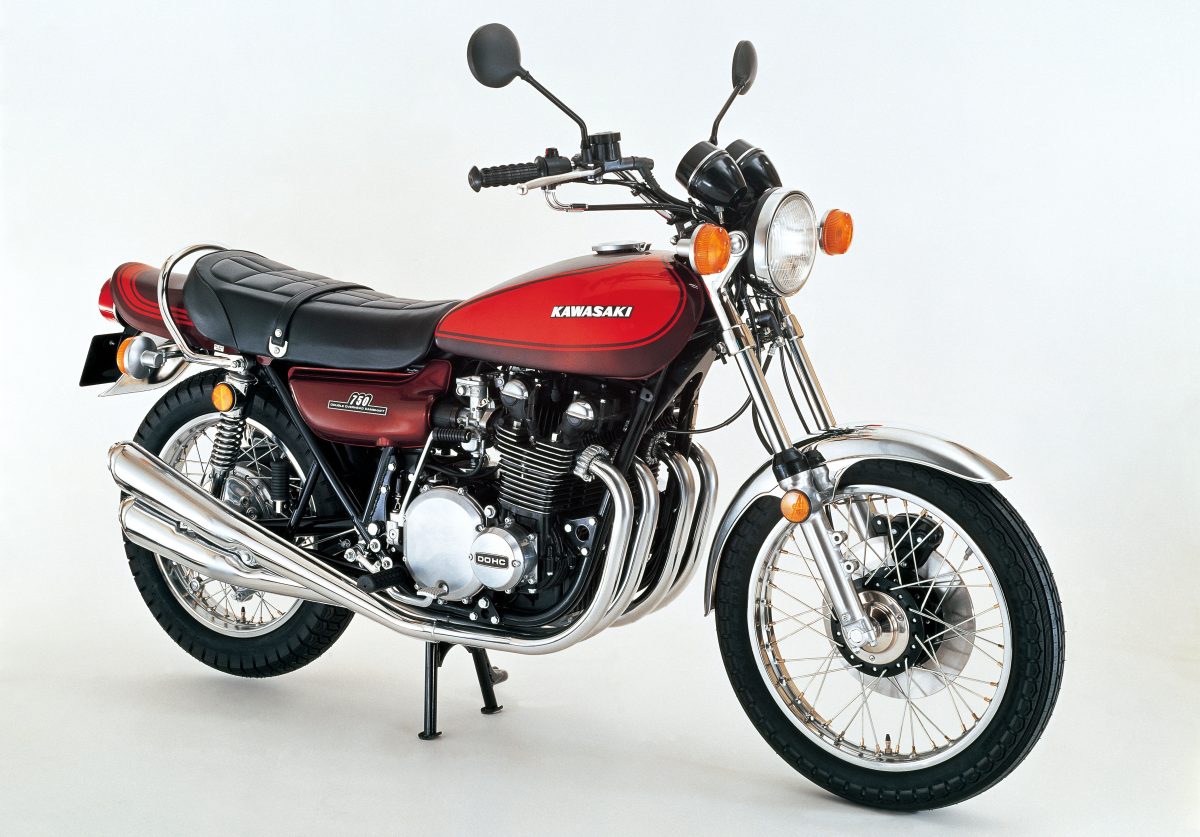
Kawasaki Z2 (1973)
These two bikes became unprecedentedly popular models, and Zephyr series and Z900RS inherit their images. They have remained the symbolic motorcycles. Why were Z1 and Z2 born? Let’s talk about the contexts and mood in those days.
Pursuit for an overwhelmingly excellent motorcycle as the proof of Japan’s growth
In 1960’s, only 25 years after a defeat in World War 2, Japan saw an astonishing recovery, benefitting from the Korean War boom. TV, fridge, washing machine became in widespread use as ‘the three Sacred treasures,’ Japan experienced unprecedented economic boom – the development of bullet trains and Tokyo-Nagoya Expressway, the host of Tokyo Olympic and Osaka Expo -, and Japan had been getting wealthier. One of industries underpinning that economic boom is the manufacturing of autos and motorcycles. Even Honda started with assembling assist engines to bicycles at its infant stage just after World War II. In the nascent period of the motorcycle manufacturing industry before WWII, tens of the manufacturers were competing for hegemony – a firm got bankrupt, another one was acquired and disappeared. Japanese bike manufacturers had some technology for the low engine displacement, but not for the high engine displacement, and most bikes of the latter type produced by Japanese were the copies of European or American ones. For example, Rikuo operated under the license of Harley-Davidson, and Marusho Motor copied BMW’s FlatTwin.
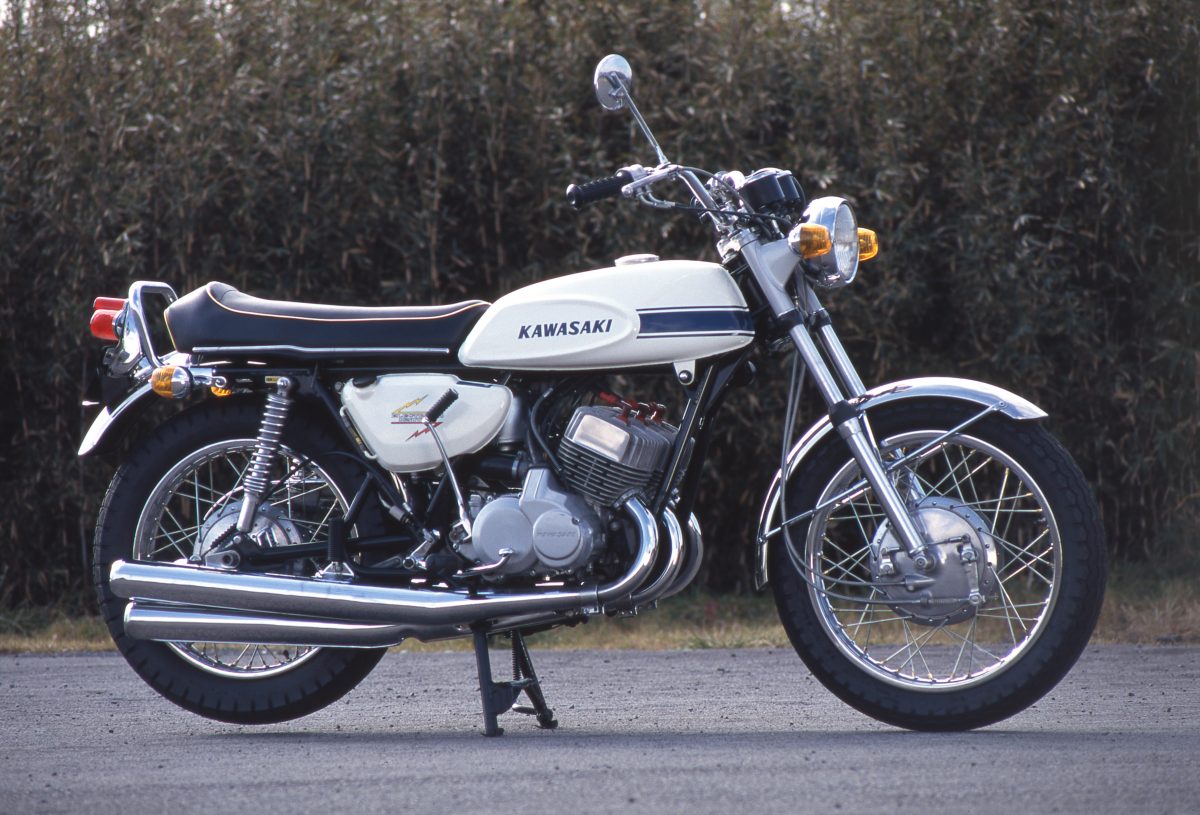
Kawasaki Mach-III(1969)
In the end of 1960’s, Kawasaki had only two high engine displacement bikes, a two-stroke Mach (air-cooled three cylinders, 500cc) and Meguro Motorcycles (acquired) W1 (parallel-twin cylinders, OHV 650cc, Triumph’s copy.) Both are famed, but the two stroke Mach lacked of dignity and luxury, and was like a ‘restive horse’ with high horsepower. We would never say W1 had a high speed, and Kawasaki needed to produce a flagship anyway.
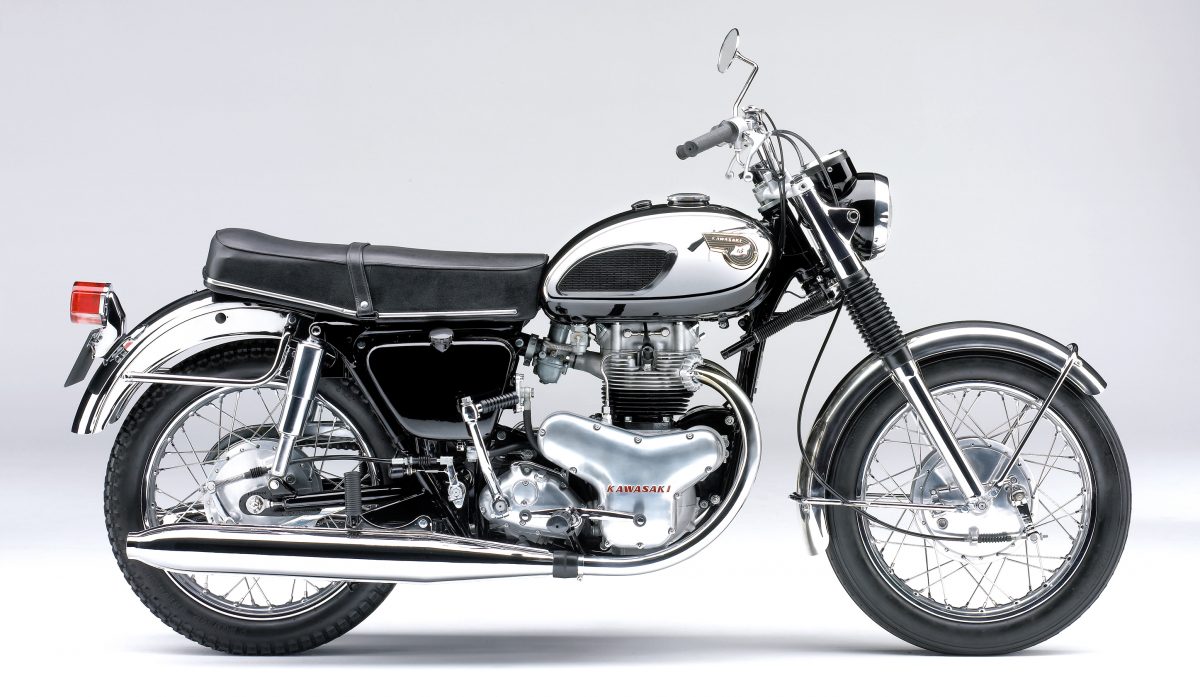
Kawasaki W1
As such, Kawasaki’s new endeavor was to produce a flagship model with a large, elaborate and powerful air-cooled parallel four-cylinder engine for North American market, the largest market in those days. Over the course of the model’s development, Honda marketed CB750FOUR and then Kawasaki expanded the displacement and developed 900cc parallel DOHC engine.
The development of this Z1 for North American market was called ‘Mission – New York steak.’ Our old publication ‘Z1 Chronicle – New York steak story – Motorcycle Sam trots over America’ details the story, but the initial publication of the book was some 30 years ago, and the book is already out of print. For those who want to read it, please search auction sites.
[article_link postid=”491584″]
The fastest in Signal GP ‘ZAPPER’
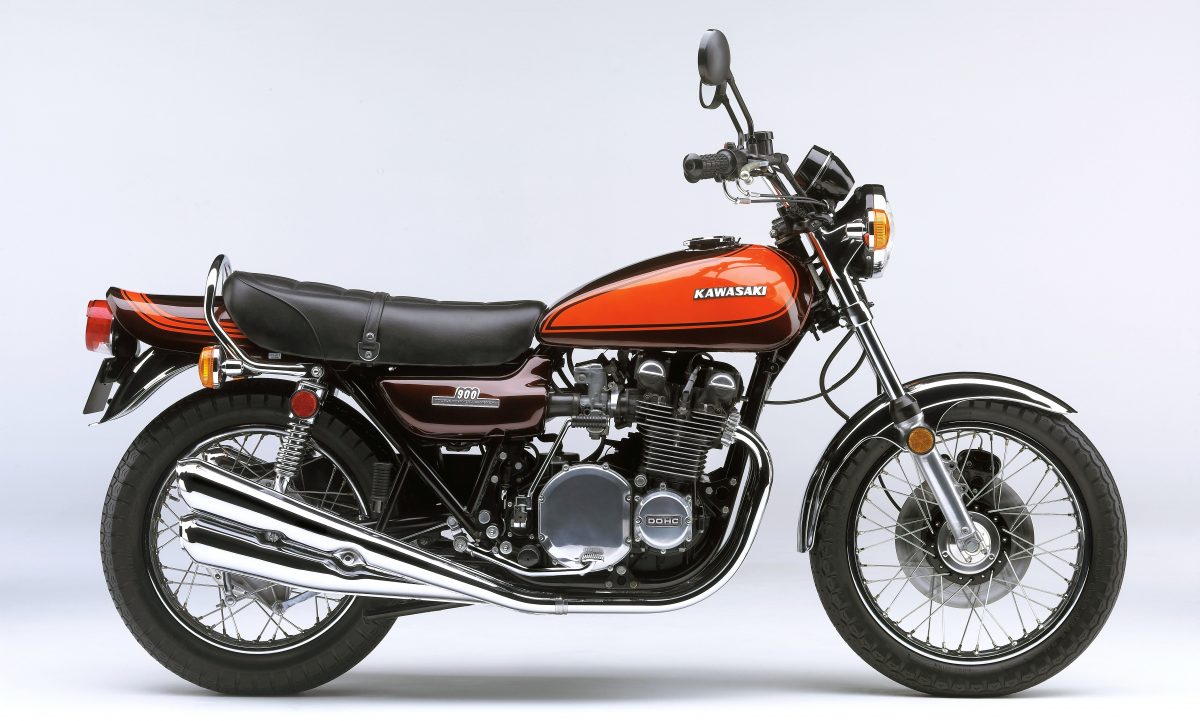
Kawasaki Z1
In such an era, the bike was produced by the technology of Japan, which was a developing nation once, to challenge the world’s most advanced ones with all their efforts. The engine was very sturdy and has room for tuning, and it subsequently realized the excellent quality as a base for custom bikes.
The bike’s air-cooled 900cc parallel four-cylinder DOHC engine is vigorous, elaborate, beautiful, powerful and unbreakable. The bike has a sturdy steel pipe double cradle frame. Its fuel tank, the symbol of the bike, is stubby like beef tournedos. And it has a highly cushioned seat, disk brakes tolerating its high horsepower and weights, and gorgeous lamps worthy of flagship status.
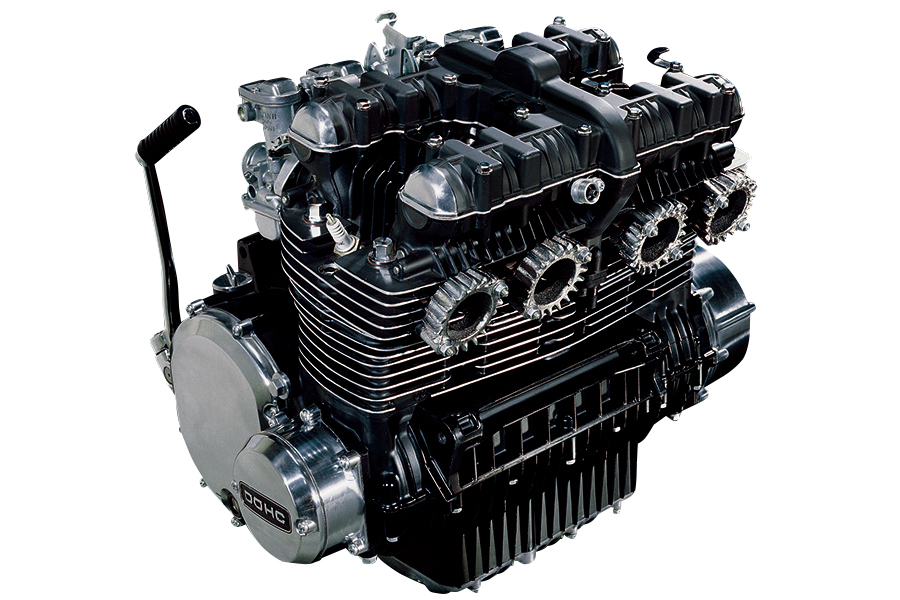
The bike was the fruit of Kawasaki’s passion and efforts to become a world’s prominent motorcycle manufacturer, getting out of ‘imitation of Euro-American ones.’ It didn’t mimic any others and realized the fully developed form as a ‘motorcycle’ with air-cooled four-cylinder engine at its core.
The name of ‘Z’ was derived from ZAPPER. ZAP is an onomatopoeia seen in American comics and represents wind sounds. In the meanwhile, Z is the last alphabet denoting ‘an ultimate bike.’
The name of ZAPPER comes from the image of dominating the signal GP, the race from the starting to goal signals like a drag race Americans like very much. After it, the name of ‘Z’ has been synonymous for Kawasaki’s big bikes.
[article_link postid=”491603″]
‘Aitsu to lullaby’ Kenji’s ‘Z2’
The reasons why Z1/Z2 gained all-time legend status are not only the qualities as a new bike.
The narrativity – they have come on a lot of novels, movies and comics – and their custom bikes – there have been custom bikes with the full originalities, going through custom tunings for a long time – would be big reasons. Who produced Z1/Z2 is Kawasaki, but who have grown them are their fans.
One of the most famous comic examples would be Kenji’s Z2 on ‘Aitsu to lullaby’ authored by Michiharu Kusunoki. His Z2 has a tank with two-tone colored (red and white,) a funnel which removes its air cleaner box, wide cast wheels and brakes are replaced with front-doubled and rear-singled displayed ones. For 40 to 50 aged Japanese bikers, the image of Z2 would be close to this Kenji’s one. For more younger ages, Eikichi Onizuka’s Guren Z2 on Shonan Junai Gumi written and illustrated by Toru Fujisawa would be famous.
Better performance by customization and create own’s special one
Another characteristic of Z2 is that plenty of after-market parts enable bikers to enjoy modifications.
The quality of the original one is good, its engine tolerates higher power (this characteristic is common with cars GT-R and Fairlady Z,) simple and naked specifications makes alternations easy and changes identifiable, and high-performance parts were subsequently made available. These would be the reasons why Z2’s bikers enjoy modifications.
Substantial changes in sounds and styles would be seen by exchanging mufflers. Particularly, in Z2, the original version had four heavy plating mufflers. If they were replaced with an exhaust manifold, the bike weight became lighter, the horse power increased, and that impact was large.
The funnel type by removing an air cleaner box, adding an oil cleaner and Earl’s oil line were popular modifications. Using wider tires (the original ones are narrow) and wide cast wheels were also favored.
When applying those modifications, the bike frame was to be strained when cornering, which entailed the frame enhancement and the replacement of the swing arms with aluminum racer replicas. Those were also massive modifications. The suspensions were in twin shock setup, and we often used Ohlins-made ones with reservoir tanks and racer replicas for the rear suspensions and front folks respectively.
We also made the handlebars’ position lower from the original’s upright one. If we got more closer to Kenji’s style, we needed to use clip-ons, which actually put some difficulty into its driving. Using disk brakes with calipers made by Brembo or AP Racing (formerly, AP Lockheed) further brought the figures closer to his ones. Other popular modifications were to put on RK’s gold chains, aluminum sprocket, the utmost size mirrors and turn signals.
Kawasaki’s eternal iron, all-time best
The original Z1/Z2 looks the form of relaxed and standard riding position, reflecting the spirit of the times, from our current view. But, the users customized them, improved their performances and made them more stylish, which was fun. The users emphasized their own originalities via their bike modifications.
Consequently, Z1/Z2 became and has been being a legend motorcycle, even nearly 50 years after their release. The market prices for their used ones in good condition are said to be 3.5 to 4 million Japanese yen, which is surprising. After Z1/Z2 release, Kawasaki made Zephyr 400/750/1100 model Z1/Z2 and their successor-like Z900RS.
Z1/Z2 are, for bikers, the all-time best they eternally hand down.
[article_link postid=”491630″]
(村上タクタ)

